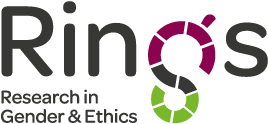Community health policy in Kenya. How is gender addressed?
We need to strengthen community health systems to achieve Universal Health Coverage by 2030. Gender intersects with community health in several ways. For example, gender norms can delay men from accessing healthcare
because of cultural norms surrounding masculinity. Gendered labour roles that mean men are usually working during hours when community health care is provided. Gender inequality limits women’s access to information and
services and their autonomy over decisions about their health.
Community health workers (CHWs) are the lynchpin of community health systems and can help to overcome barriers in access and promote gender equity. But because CHWs come from the communities they serve they
may have internalised harmful gender norms and can replicate them in their work. This limits the provision of high-quality services and may mean CHW programmes reinforce, rather than challenge, gender inequity.
Women, girls, boys and men all have distinct healthcare needs. Integrating a gender perspective in community health programming ensures that everyone’s healthcare and psychosocial needs are met regardless of culture, age, sexual orientation, gender identity, ethnicity and religion. This will lead to equitable, effective and efficient programming and reach at community level.
This brief provides a summary of Kenyan community health policy documents to assess their gender focus and rank them in accordance with a continuum of approaches to action on gender and health. It suggests measures that can be taken to make these policies more gender equitable.
